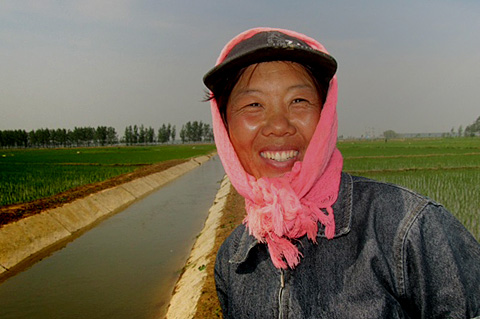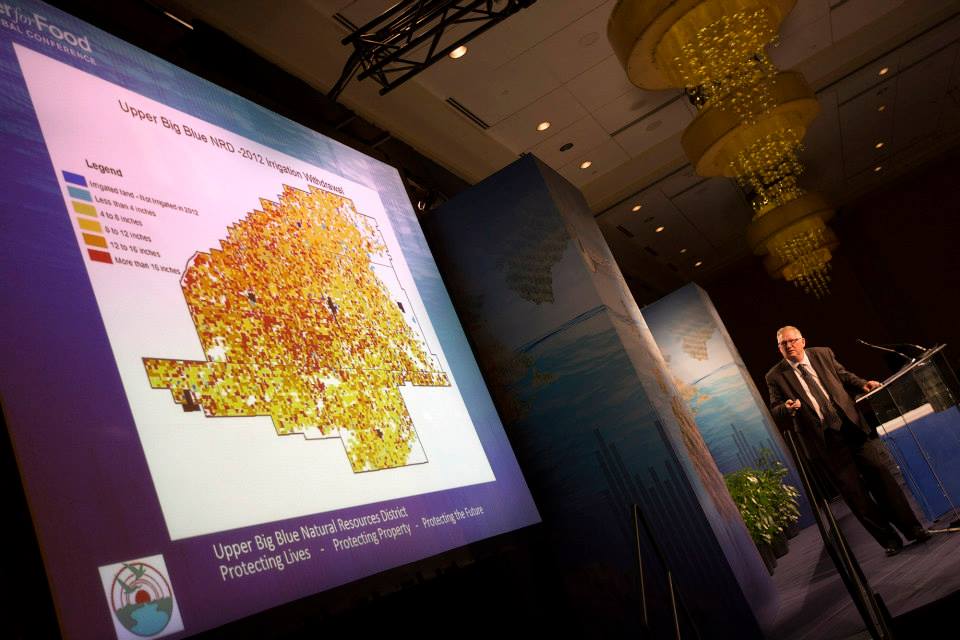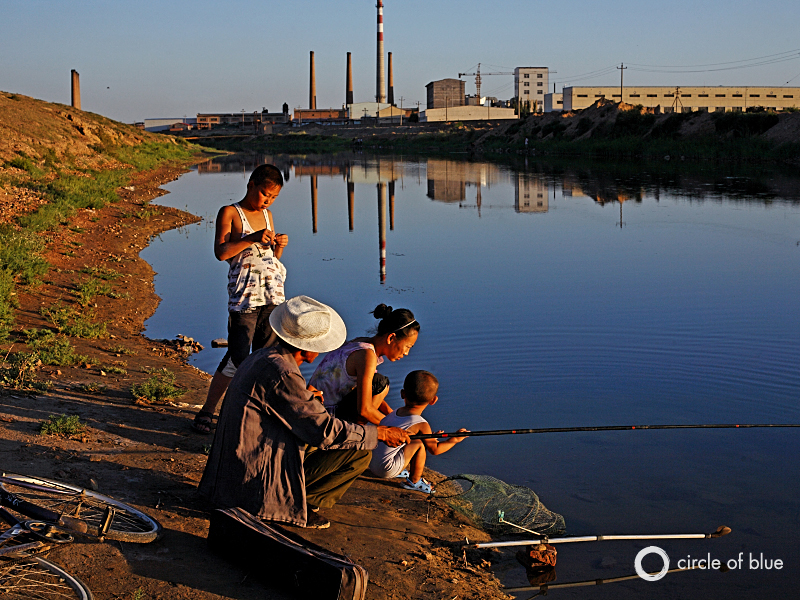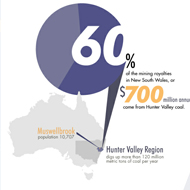Lessons in Rice, Water, and Farming
Circle of Blue’s senior editor reports from the field, literally, as he ends his second week in the rice paddies of rural China.

SHENYANG, China — The rice paddies start immediately beyond the borders of Liaoning’s provincial capital, a growing city of 8.1 million residents. Like a whirling turbine, the city flings 10-lane boulevards and 30-story apartment towers ever further into the countryside.
As part of my research, I’m out here tracking down new irrigation systems. Finding the rice and evidence of China’s new investment in modern irrigation infrastructure is a 50-minute cab ride from center city.
Water supply and water quality are two of the big impediments to farm production in this northeast China province. A year ago, provincial farm authorities replaced a “mud-banked” canal with a “branch-irrigation” canal that supplies farmers with water from the Liao River. But as we rode out to Fahaniu Village 1 where the canal was completed a year ago — I also learned that, over the past two decades, the township had lost half of its cropland to urban development.
My guide this day is Li Qinglu, a retired chemical engineer and former professor who, at 68, has spent the last eight years becoming an expert in agriculture, water, and in cultivation practices to prevent northeast China’s extensive grasslands from literally turning to dust. He’s also become one of Shenyang’s prominent environmentalists.
Li and his wife, Huang Jingli, are partners in a 50-mu farm (a bit more than one hectare/three acres) that produces vegetables, rice, and fish in Fahaniu Village. Much of the work is done with hand implements. Their friend and farm manager, Li Jiazhen, is busy planting in one of the small gardens when we arrive. I see Li Jiazhen slowly stepping backwards, hoe in hand, scooping out softball-sized holes in the soil. His wife, Qujuan, is in front, clutching to her belly a small aluminum bowl filled with bean seeds. She steps forward, one foot, then another, dropping a single pea-sized seed into the hole and then pushing soil to cover it with her toe.
The choreography of their line dance, mixed with the sound of soil being dug and moved, is simple and in rhythm — the pull of the hoe, a step, the drop of the seed, a step, the toe-swipe of the soil cover, a step. I have the clear sense that this same duet of spring has occurred on this land for centuries.
A new sound — of modern agriculture, of water surging in concrete canals — is close by.
The Chinese central government has called for grain production to rise over 50 million metric tons — a roughly 10 percent increase — from 2010 to 2020. The government is counting on the farmers of Liaoning and three other northeast China provinces to supply most of the new grain. One of the central tools to assure that more rice, corn, soybeans, and other basic field crops are produced is to supply plant roots with adequate water through irrigation.
China is now spending $US 1.2 billion annually in the four provinces to build hundreds of kilometers of new concrete canals and to change thousands of kilometers of existing mud-lined canals into concrete waterways.
One of the irrigation rebuilding projects concluded here a year ago. We learn this from Liu Caiyun, a 32-year-old rice farmer, who’s kneeling and using a hand trowel to plant beans on the top of the mud walls that line her 6-mu (1,600-square-meter, or half-acre) rice paddy. I ask her about the concrete canal that supplies the water from the Liaohe that floods her paddy.
“We get a steady supply,” she tells me. “And the water is much cleaner.”
–Keith Schneider
Circle of Blue senior editor
Circle of Blue’s senior editor and chief correspondent based in Traverse City, Michigan. He has reported on the contest for energy, food, and water in the era of climate change from six continents. Contact
Keith Schneider










Leave a Reply
Want to join the discussion?Feel free to contribute!